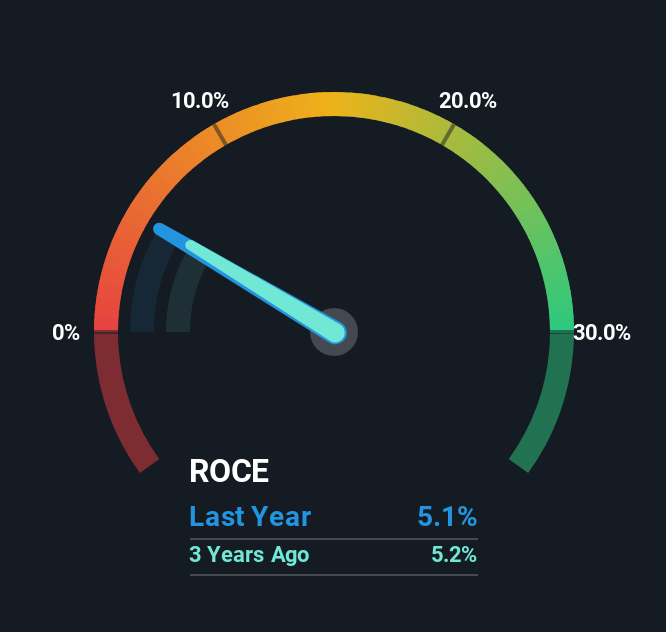- Poland
- /
- Renewable Energy
- /
- WSE:PEP
Polenergia's (WSE:PEP) Returns On Capital Not Reflecting Well On The Business
There are a few key trends to look for if we want to identify the next multi-bagger. One common approach is to try and find a company with returns on capital employed (ROCE) that are increasing, in conjunction with a growing amount of capital employed. Put simply, these types of businesses are compounding machines, meaning they are continually reinvesting their earnings at ever-higher rates of return. Although, when we looked at Polenergia (WSE:PEP), it didn't seem to tick all of these boxes.
Return On Capital Employed (ROCE): What Is It?
Just to clarify if you're unsure, ROCE is a metric for evaluating how much pre-tax income (in percentage terms) a company earns on the capital invested in its business. Analysts use this formula to calculate it for Polenergia:
Return on Capital Employed = Earnings Before Interest and Tax (EBIT) ÷ (Total Assets - Current Liabilities)
0.051 = zł379m ÷ (zł8.2b - zł735m) (Based on the trailing twelve months to June 2025).
Therefore, Polenergia has an ROCE of 5.1%. Ultimately, that's a low return and it under-performs the Renewable Energy industry average of 7.9%.
Check out our latest analysis for Polenergia

Above you can see how the current ROCE for Polenergia compares to its prior returns on capital, but there's only so much you can tell from the past. If you're interested, you can view the analysts predictions in our free analyst report for Polenergia .
How Are Returns Trending?
In terms of Polenergia's historical ROCE movements, the trend isn't fantastic. Around five years ago the returns on capital were 8.6%, but since then they've fallen to 5.1%. On the other hand, the company has been employing more capital without a corresponding improvement in sales in the last year, which could suggest these investments are longer term plays. It may take some time before the company starts to see any change in earnings from these investments.
What We Can Learn From Polenergia's ROCE
Bringing it all together, while we're somewhat encouraged by Polenergia's reinvestment in its own business, we're aware that returns are shrinking. And investors may be recognizing these trends since the stock has only returned a total of 24% to shareholders over the last five years. As a result, if you're hunting for a multi-bagger, we think you'd have more luck elsewhere.
Polenergia does have some risks, we noticed 3 warning signs (and 1 which is a bit unpleasant) we think you should know about.
While Polenergia isn't earning the highest return, check out this free list of companies that are earning high returns on equity with solid balance sheets.
New: Manage All Your Stock Portfolios in One Place
We've created the ultimate portfolio companion for stock investors, and it's free.
• Connect an unlimited number of Portfolios and see your total in one currency
• Be alerted to new Warning Signs or Risks via email or mobile
• Track the Fair Value of your stocks
Have feedback on this article? Concerned about the content? Get in touch with us directly. Alternatively, email editorial-team (at) simplywallst.com.
This article by Simply Wall St is general in nature. We provide commentary based on historical data and analyst forecasts only using an unbiased methodology and our articles are not intended to be financial advice. It does not constitute a recommendation to buy or sell any stock, and does not take account of your objectives, or your financial situation. We aim to bring you long-term focused analysis driven by fundamental data. Note that our analysis may not factor in the latest price-sensitive company announcements or qualitative material. Simply Wall St has no position in any stocks mentioned.
About WSE:PEP
Polenergia
Engages in the generation, distribution, trading, and sale of electricity in Poland and internationally.
Moderate growth potential with low risk.
Similar Companies
Market Insights
Community Narratives




